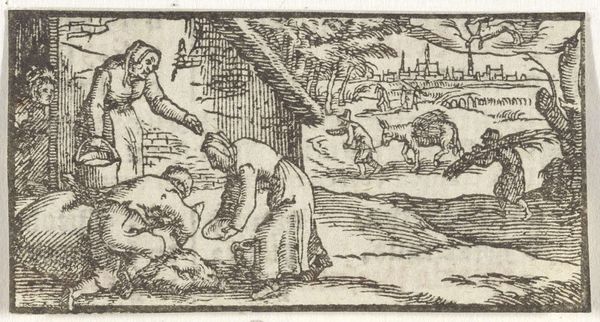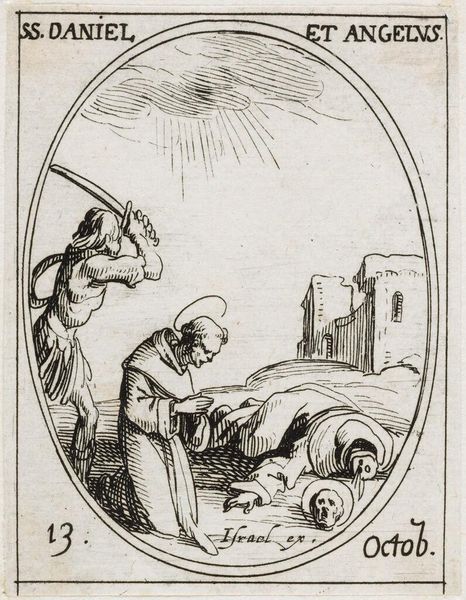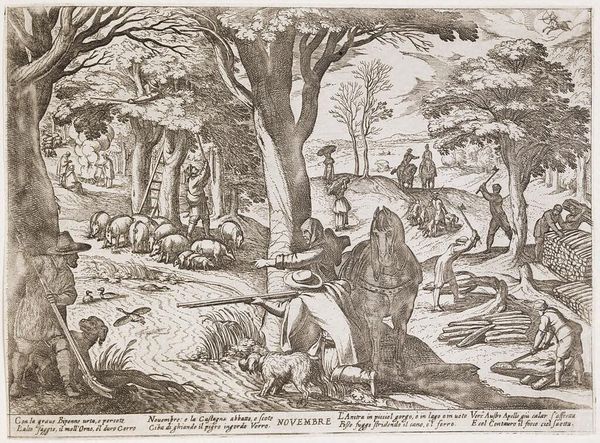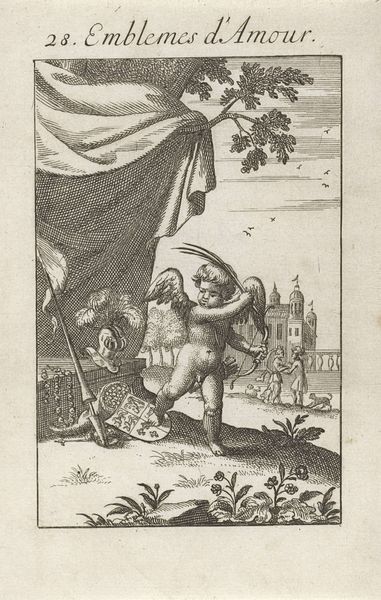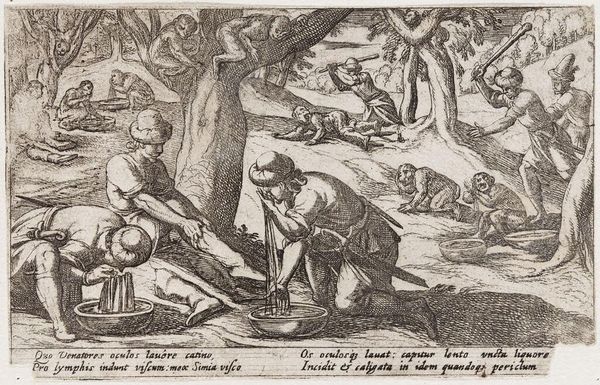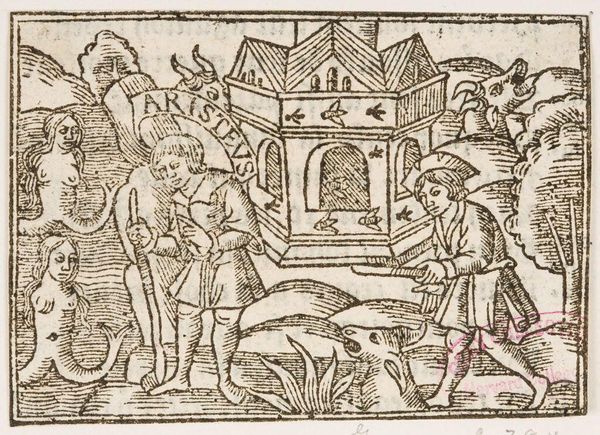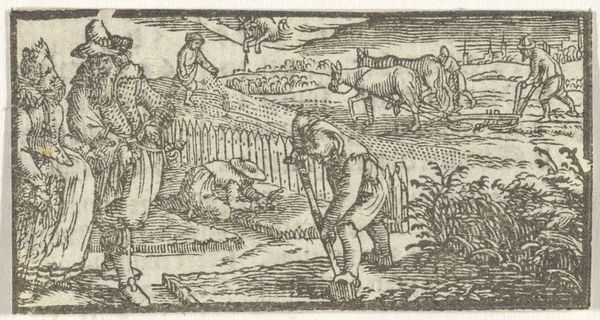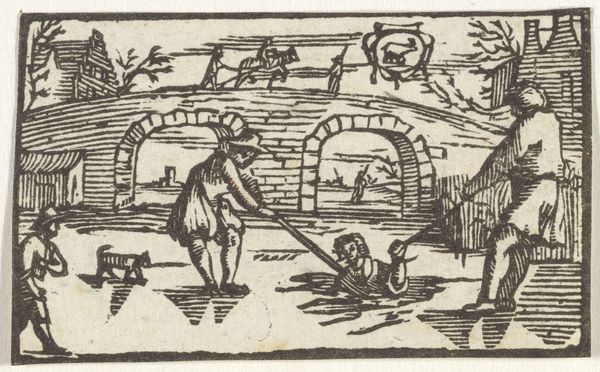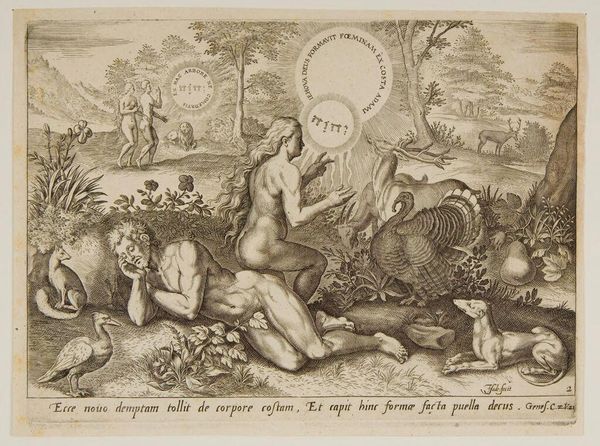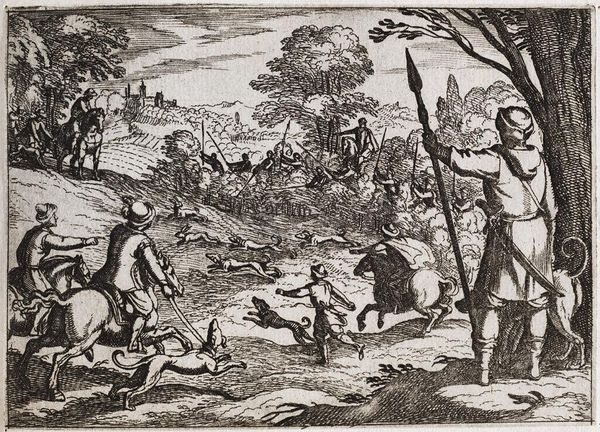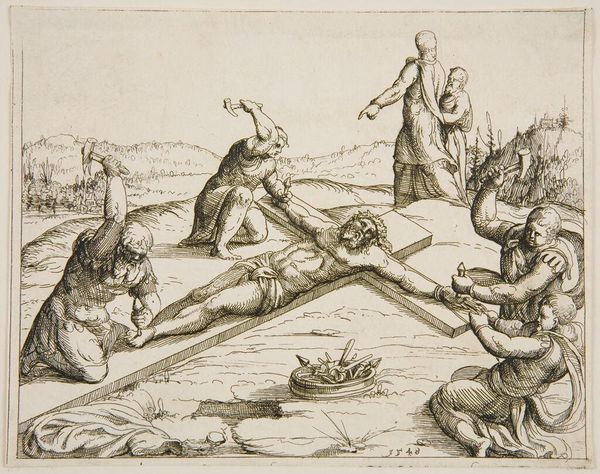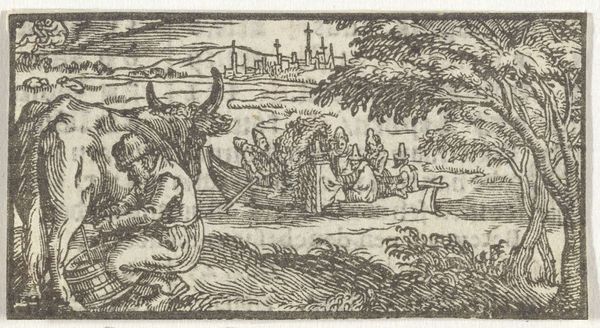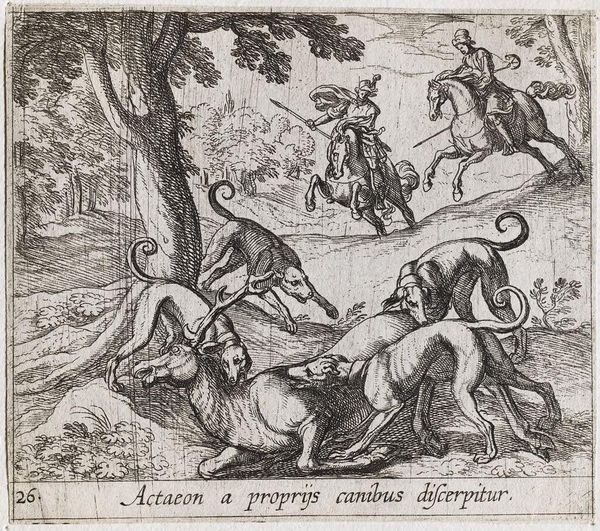
print, engraving
#
ink drawing
#
pen drawing
# print
#
landscape
#
figuration
#
line
#
history-painting
#
northern-renaissance
#
engraving
Dimensions: width 220 mm, height 74 mm
Copyright: Rijks Museum: Open Domain
Editor: So this is Julius Goltzius's "The Prodigal Son Taking Leave of his Parents," a print from around 1560 to 1595. It feels incredibly detailed, almost like a little world is captured here. I am struck by how this everyday story takes place against such a complex scene. What kind of role does that detail play, do you think? Curator: The detail serves several functions. First, the print medium itself played a crucial role in disseminating biblical stories and moral narratives across Europe during the Reformation and Counter-Reformation. Prints like this weren't just art, but tools of religious and social instruction. Think about the political climate of the time: how do you see this narrative playing out against the broader backdrop of Reformation tensions and moral instruction? Editor: So, it’s not *just* illustrating the story; it's promoting particular values? Maybe even trying to guide people’s behavior? The busy setting, the architectural backdrops...it's making the 'moral of the story' feel urgent? Curator: Exactly. This wasn't art for art's sake, necessarily. Prints had a public function, particularly as didactic tools in early modern Europe. Goltzius also embeds the viewer within the opulence of this setting. Now what would you infer the relationship is between Goltzius's imagery and his contemporary patrons or market? Editor: Wealthy merchants who wanted to display that they know and followed this lesson, maybe? Or maybe they empathize with the family *losing* wealth! The message can swing both ways...It does bring an entirely new perspective on prints as an agent of socio-cultural dialogues, rather than purely an aesthetic piece. Curator: Precisely. Reflecting on Goltzius and his audience helps you to realize the potential the "public" has had on molding not only art interpretation, but creation. Editor: Thanks for this insight. Looking at it again now, it makes me realize how many layers of context shape our reading of even a seemingly straightforward image.
Comments
No comments
Be the first to comment and join the conversation on the ultimate creative platform.
